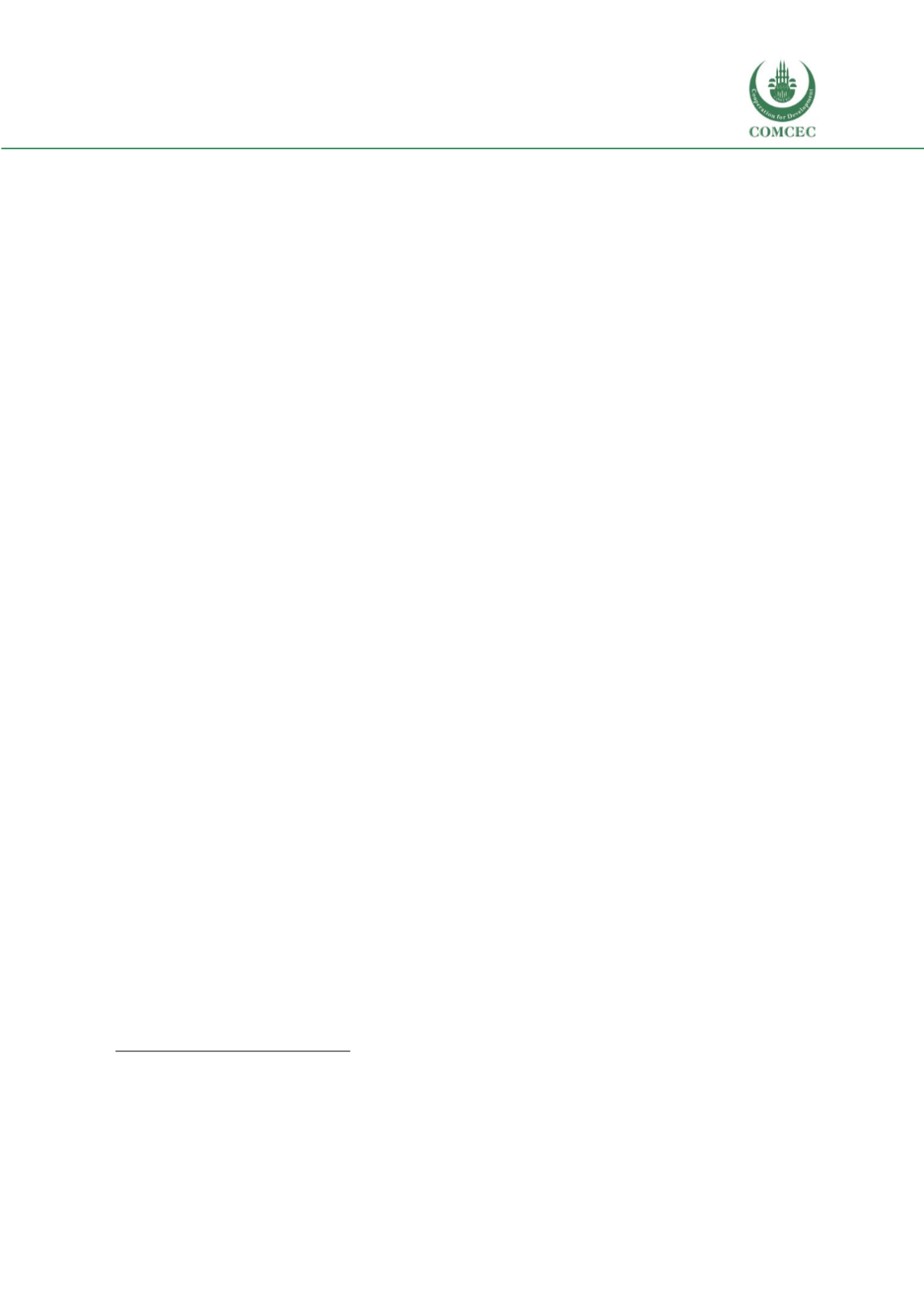

Education of Disadvantaged Children in OIC:
The Key to Escape from Poverty
193
the OIC. More than half of the OIC countries spend less than 15 percent of their
government budget on education.
In the OIC there is a widespread problem of quality in education.
Low quality
education is observed as indicated by low learning achievements in comparative
assessment tests like PIRLS, TIMSS and PASEC. OIC member countries generally perform
worse compared to other participating counties in these tests. While in fact, participating
member countries should actually be achieving better outcomes given the level of
government expenditure on education.
In Chapter III of the report, case studies on countries chosen to reflect the geographic and income
level diversity of the OIC. The chapter goes into more detail using microdata analysis and in-depth
interviews along with a desk review to report the situation in these countries and the policies
employed to remove the barriers preventing children from accessing education. The case
countries are Senegal, Jordan, Pakistan and Turkey. The Human Opportunity Index is used for
these case countries to provide information about access to education along with how equal
access is, using micro level data (Demographic and Health Surveys).
511
Results show that Jordan
is and has been very good at providing education for all children while Turkey is close to Jordan
but has some way to go, especially in finishing 8 years of education. In contrast, Senegal and
Pakistan have more to do compared to Jordan and Turkey. While progress has been observed in
these countries both in access and equality in access, there remains significant scope for
improvement.
Lastly, in the Recommendations chapter of the report, distilling information from the
interventions applied across the world, in the OIC and in case countries, the responses that have
been employed and that have worked are outlined.
512
For the alleviation of the poverty barrier
, abolishing school fees coupled with
conditional cash transfers and school feeding programmes seem to work well.
For the alleviation of the location barrier
, setting up schools in existing buildings in
difficult to reach areas or building new schools works well. Another approach is to
provide free transportation to children to allow them to reach the schools that are closest.
For the alleviation of the gender barrier
, putting gender equality in education as a
priority in national strategies and plans works well. Targeting girls specifically or having
a gender perspective in the programmes is also important. Lastly, public awareness
campaigns can be implemented to change the attitudes of households.
511
See Annex 1 for methodology and the details on the calculation of the Human Opportunity Index
512
These interventions are outlined in more detail in Chapter 1 for the world in general, in Chapter 2 for the OIC countries and
in Chapter 3 for the case countries. Chapter 4 summarizes recommendations emerging from these interventions as good
examples.
















